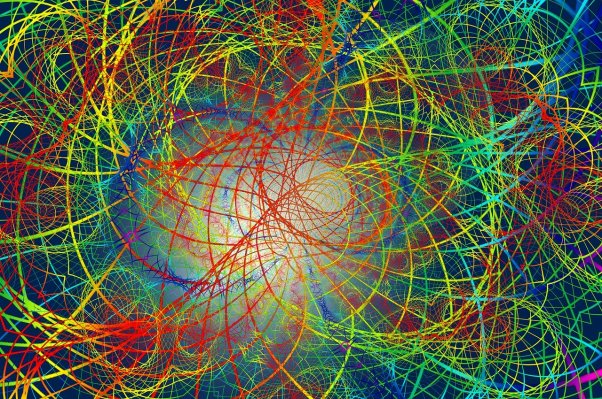
We are beset on all sides, daily if not hourly, by COVID-19 data, hypotheses, speculation, and crackpot conspiracy theories. Even if armed with a mathematical mind, and some kind of grounding in critical thinking, how are we supposed to make sense of it all?
Assuming you even want to make sense of the chaos; assuming you haven’t already decided on a fixed position and a rigid lens. Assuming that resisting any change in your thinking, no matter what new information comes in, has not become the bedrock of your identity. It’s sad how often that seems to be the case. It applies to everyone ranting “Bill Gates did it” to “we are the virus” to “it’s just the flu” to “any deceleration means it’s clearly time to end lockdown,” and numerous others.
In extremely grudging fairness to them, we live in a world in which news, or “news,” often pops up on social media without any useful context or consideration. We have to provide our own context, now, in this brave new world of news. Learning how to do that is becoming one of the most crucial skills we need to make sense of what we read.
Even if you’re blessed with that skill, though — well, we’re all watching science happen in real time. Extraordinary work is being done at an astonishing rate. We live in a miraculous era. That said, the process can be messier than some may have imagined. We have to know how to weigh preprints vs. peer review, models vs. data, and hypothetical speculation vs. grim reality.
This applies to treatments as much as research. If your opinion of whether Drug X works is colored by whether your political tribe supports Drug X, you aren’t just doing science wrong, you’re doing knowledge wrong. The virus does not care about your politics.
We also have to accept nuance. Consider ventilators. The initial word was: “we desperately need as many ventilators as possible!” Of late there have been some intimations that “ventilators are overused, and may sometimes do more harm than good!” Both of these things could be true at the same time. Resist the temptation to conquer this chaos with slashing, drastic mental oversimplifications.
A good way to make sense of the noise is to distinguish between three categories of information: A) what we know is true, B) what we think is true, inferences drawn from reasonably strong supporting evidence, and C) opinions and speculation.
There’s a lot of C) with extremely limited evidence masquerading as B). And there are a lot of grim facts which are now firmly in category A), such as the extremely clear evidence that this virus can and will overwhelm hospitals if left unchecked, as shown again and again: in Wuhan, in Lombardy, in Spain, in New York City.
There was low-grade C-category speculation early on that the virus might have an infection fatality rate as low as 0.025%. Now that ~13,000 New Yorkers are already categorized as confirmed or probable COVID-19 deaths, in a city with a population of 8.5 million — a fatality rate of 0.15% for the entire city, not just those infected — it’s past time to recategorize that and similar speculation as category D), “proved completely wrong.”
It’s important to be ready to move your own beliefs to category D as well. There’s much we don’t know, and much we’re still learning. If you think you know all the answers today, please consider the certainty that you are incredibly wrong. I can assure you that you will never get a chance to debate the virus and convince it of the rightness of your beliefs. So try to be not just ready, but eager, to change them in the face of new evidence.
"how" - Google News
April 20, 2020 at 02:12AM
https://ift.tt/2VKn1Kp
How to make sense of the coronavirus chaos - TechCrunch
"how" - Google News
https://ift.tt/2MfXd3I
Bagikan Berita Ini















0 Response to "How to make sense of the coronavirus chaos - TechCrunch"
Post a Comment